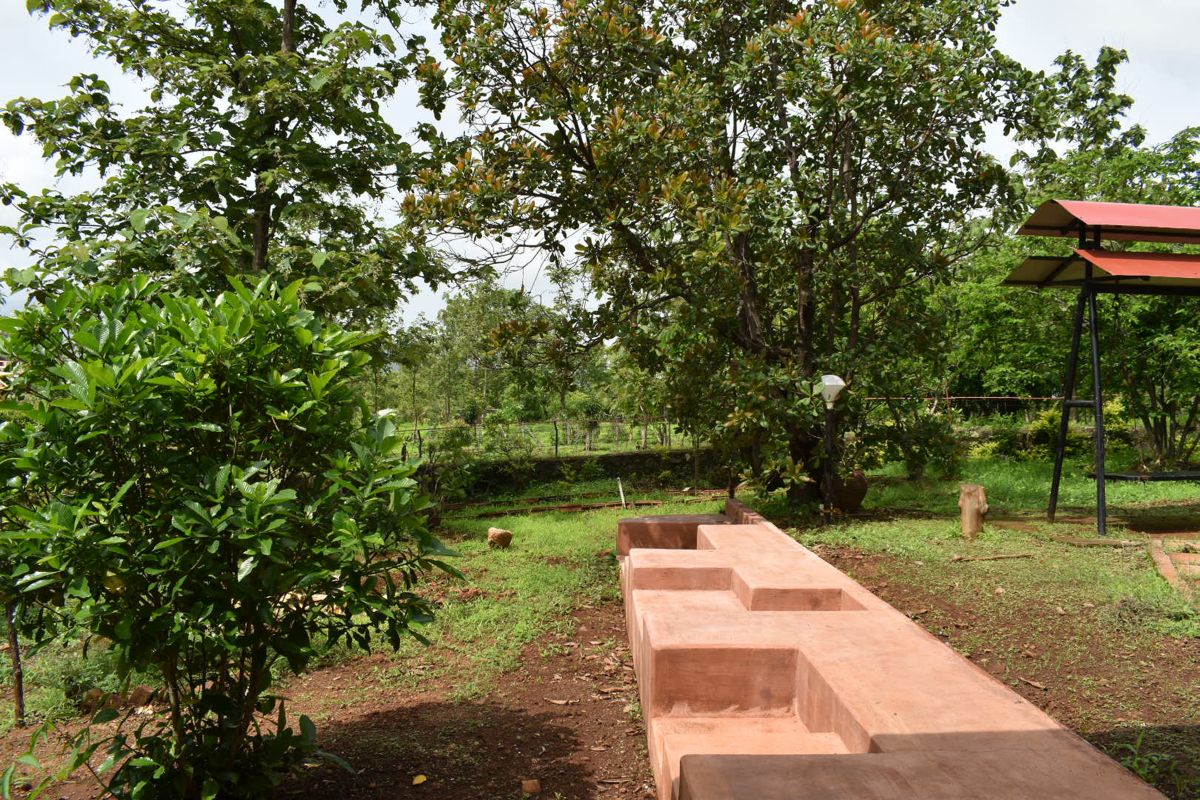The primary intention was to design a seating as an extension to the verandah of the farmhouse. The idea was to make the space interactive by creating a stepped seating, to take the advantage of the existing steep contour of the site. We practice sustainable architecture, the built form was executed using natural materials which were available within 1-5km radius from the site.We used local hand-made mud bricks, natural geru powder, soil and debris from the site, without relocating or removing any tree/ shrub and oriented the seating accordingly. We wanted to give an opportunity to the local craftsmen to execute our design for generating employment.

Rushitoya – Homestay, Droneshwar, Gujarat, by d6thD Design Studio
Rushitoya homestay, Gujarat, designed by d6thD Design Studio, offers a layered experience of the river, embracing Kathiyawadi house style.
















